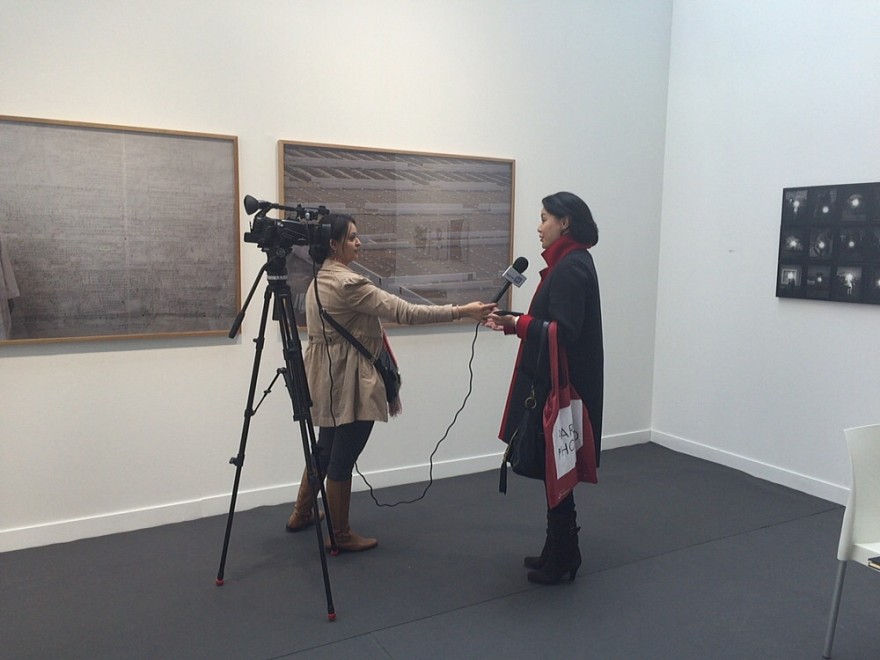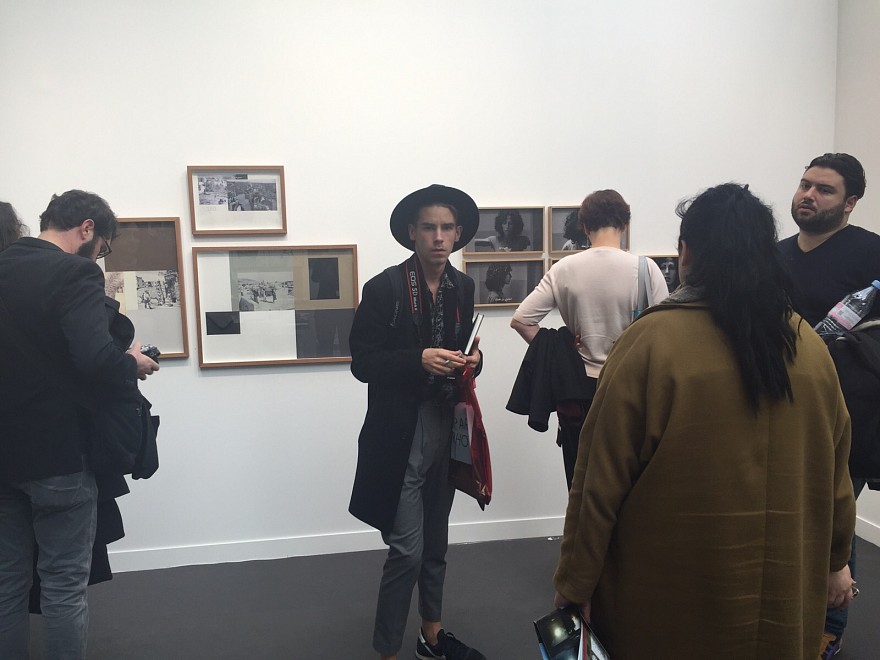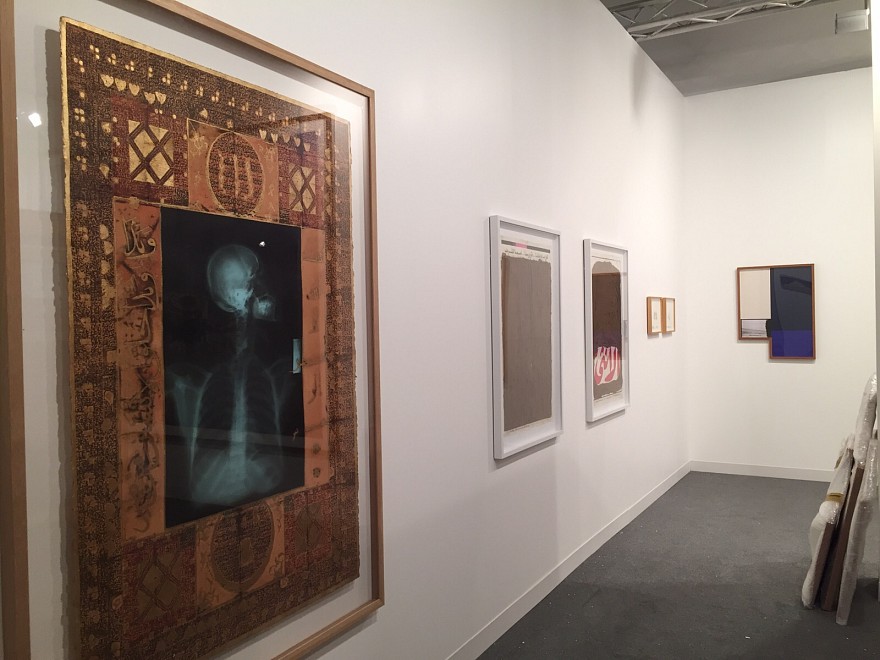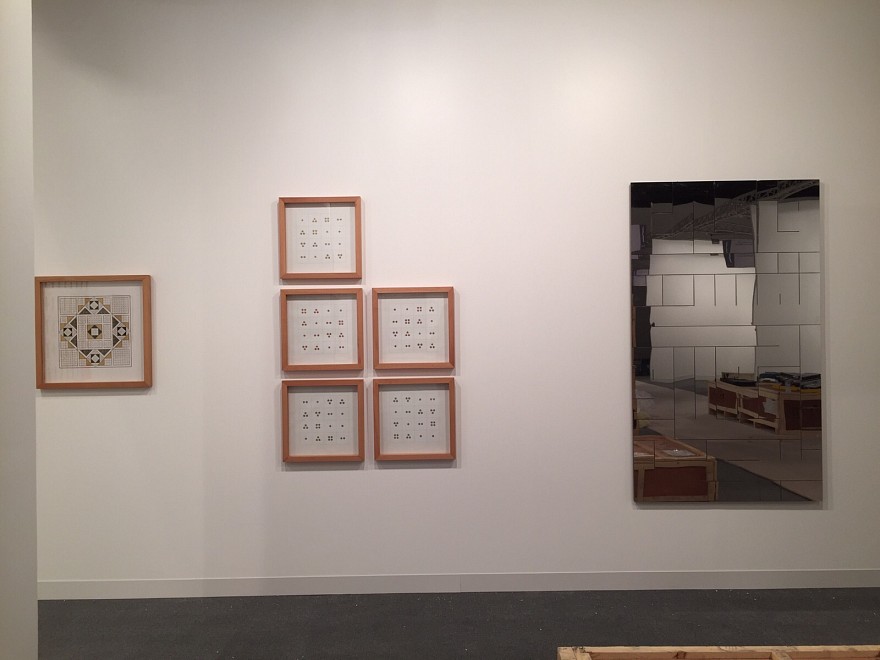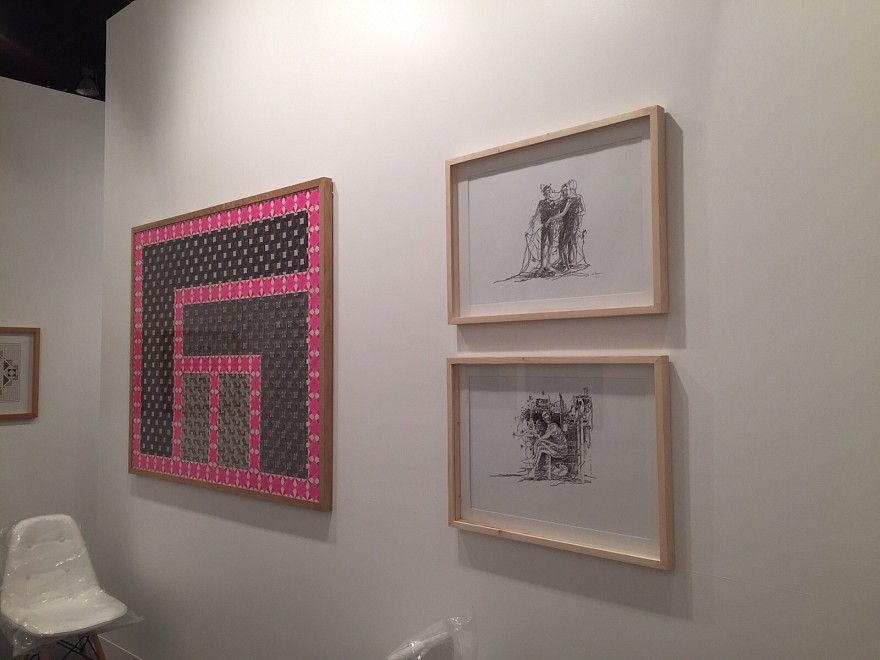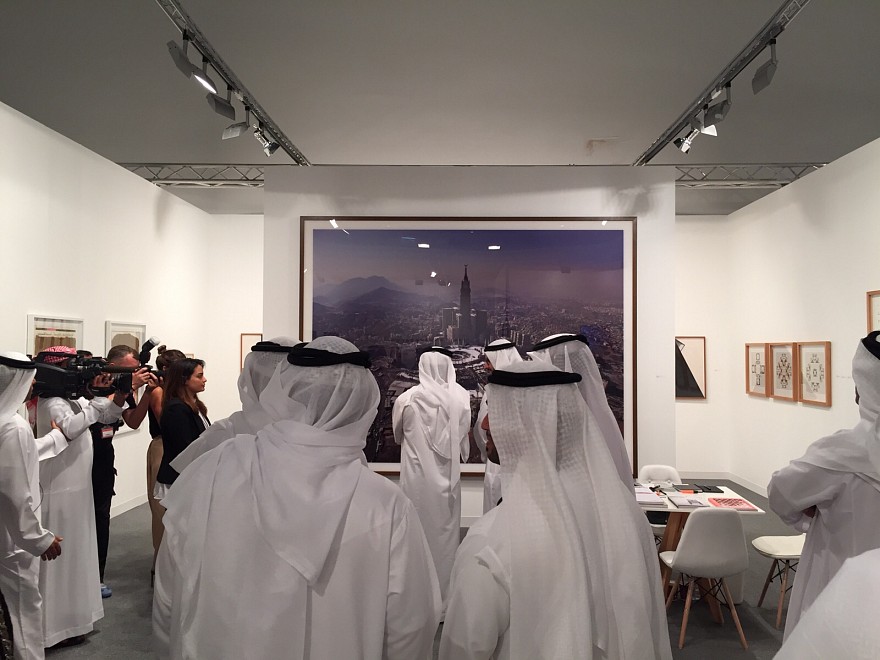ATHR to exhibit the works of 11 represented artists in Abdu Dhabi Art 2015.
The Abu Dhabi Art will feature the works of the artists: Ahmed Mater, Aya Haidar, Ayman Yossri Daydban, Dana Awartani, Daniah AlSaleh, Mohammed Abdulrasool, Nasser AlSalem and Poonam Jain in a Modern Contemporary Gallery. The Abu Dhabi Art programme is a corner-stone of the wider Abu Dhabi Art platform featuring a dynamic interdisciplinary set of art, talk and sensational experiences for all audiences to enjoy. The programme includes performances, panel discussions, workshops, exhibitions, design presentations and art installations. Ahmed Mater Ahmed Mater developed the concept for ‘Desert of Pharan’ while working on his ‘Empty Land’ series. In this series he honed his proficiency in the medium of photography, as a way of narrating the transformations Saudi Arabia is undergoing. Empty Land, being an attempt to read the scars modernization had wrought on his homeland, quite naturally led him to the subject of Makkah. Over the past decades the cultural heritage of the city has been wiped out in a ‘Saudification’ drive. This process has received a final impetus with the decision to increase the size of the mosque five times, thus destroying the last old quarter of Makkah. On the surface these changes may seem as necessary steps to accommodate the ever growing number of pilgrims coming to the city, yet underpinning it is an ancient rivalry between the Hejaz and the Nejd. “Desert of Pharan” is Ahmed’s artistic response to these developments. “Pharan” is taken from the Quran, as the area around Makkah was called like this in the ancient days. For this project Ahmed rented an apartment in the city and befriended many of its inhabitants. His friendly acquaintance with the Governor of Makkah, an artist who used to be Governor of the Asir (where he set up the Al Miftaha Arts Village where Ahmed and other artists from his generation studied) helped him get the necessary clearances. Using the latest in photographical technology Ahmed has documented many aspects of the city’s transformation, from the experience of the construction workers to images of the new Mosque in construction, from the luxury hotels ‘with a private view on the Ka’aba’ to the streets and public festivities in the city. And in October 2012 he documented the Hajj, from helicopters, motorcycles and fixed vantage points above the crowds, but also by participating as a simple pilgrim. Aya Haidar Aya Haidar’s discovery of Jeddah’s old town lead her to the avid exploration of such a timeless site of true national heritage and pride. Haidar’s time was spent photographing and documenting the architecture and surrounding areas, subsequently leading to the development of Al Balad (2012), a body of work merging modern-day printed digital photography on linen with the more traditional practice of hand stiched craft. Her representation of Jeddah’s old town looks into bridging the gap between the historical and the contemporary. The towering hand carved wooden facades that enrich the district are embellished and revived with the use of brightly coloured embroidery thread. The choice of colour of thread is deeply rooted in Saudi Bedouin culture and encapsulates Jeddah’s soul. Aya Haidar’s into the color’s significance was a profound one, which left her in awe. Outsider notions of Saudi dress is limited to the black Abbaya for women, yet traditional Saudi culture and customs hold great importance in the value of colour and its symbolism to nature and surrounding environment. It is this celebration of the nature of identity- both historical through to the contemporary- that I wish to emphasise. The deconstruction of the series- visually in terms of representation and symbolically in terms of colour and composition is what presents a multi-layered perception of such a multi-layered and resonant society. Ayman Yossri Daydban “Maharem” originated from the tissue box, which middle to lower income families exhibit in their sitting room for their guests’ convenience. These boxes are lavishly decorated with velvet and kitschy gold rims and are considered decorative masterpieces, a source of pride to the lady of the house. Daudban’s initial manipulation of the tissue box was to strip the box of all its luxuries, using the roughness of wood and the sharpness of the language, through printed popular sayings, proverbs and riddles, thus changing the functionality of the object from utilitarian to a source of ideas. Witnessing the guests’ interaction with these boxes enticed Daydban to further introduce prints from Egyptian movies that shaped his childhood and contributed to his emotional development. “Maharem” was born. The tissue drawn from its box is a tribute to a culture where emotions are impulsively revealed, exhibited and shared, particularly within the extended circle of family and friends. For the artist, his interaction with the outside world was exclusively through two mediums: Extended family and movies. The movies revealed the outside world while the family acted as a protector and shield. The artist has frequently shed tears while watching these movies and the tissues he drew are witness to a humanity shared. In Ayman’s words: ‘The Middle Eastern man is an emotional man, primarily driven by feelings and often governed by them... We are not materialistic, our emotions take over.’ Dana Awartani Dana Awartani presents artworks from three different collections that she has created; The Heavenly Bodies, When it All Adds Up and Zodiacs. Dana Awartani’s practice is preoccupied with how to translate universal truths through numbers, looking to sacred geometry as the underlying principle to the works. Exploring concepts of harmony and symmetry through geometry, she uses Islamic compositional design as her vehicle for expression. Inspired by traditional art and techniques of craft-making, Dana is particularly interested in the relationship between geometry and nature and how universal truths can be translated through art using geometric principles. Daniah AlSaleh Daniah AlSaleh’s piece Questions what is the perfect family in our current times. She chose a family that consists of a Mother, Father, and 2 children, using a minimalist approach to depict the human form, that is the rectangle representing the body. The viewer can decipher easily who is who, and can deduct from the body language, the emotions of each member of the family. The dotting mother, the protective father and so on. But that image, of the perfect little family, has dramatically changed at the present, the family structure has changed...From single Mothers to stay at home fathers? How about the legalisation of same- sex marriages? although that is not applicable in our culture, but I would like to think that the painting could be understood by different cultures not necessarily only ours. Will that disturb a family's instability? yes? no? What makes a healthy upbringing? a father figure and mother figure? or just being simply loved and taken good care of? These are some of the Questions that are addressed, and there are plenty more I presume depending where the observer is coming from. The family is painted in monochrome, symbolising the fading away of what is perfect. The back ground colour in bright Fushia symbolising a dream. Mohammed Abdulrasool Mohammed Abdulrasool’s work attempted, and continuously attempts, to create tangible mental images of lines that appear as ropes or thread. These threads, that visually create and contour the forms of his subject matters, allow for a myriad of visual and conceptual interpretations. Moreover, it coincides with a universal notion of wholeness: that all elements are connected, and if one area or part is affected, it therefore implements an effect on other connected parts. This notion supports the conceptual and visual factors in Abdulrasool’s work; it became logical to link all the subjects with lines. He found that lines he created have an inherit duty to continuously move and flow without interruptions; to form objects and figures, and direct the eye to visually realize the entirety of the work. Although the forms appear to be entangled and trapped in the lines, it is in actuality part of its visual existence and formation. It therefore allows movement and motion despite its constricting and prohibiting appearance. Mohammed Abdulrasool found that lines are able to articulate on the human capability of overcoming restrictions and hindrances in life; that like lines, humans have an innate desire to pursue freedom. Nasser AlSalem Nasser AlSalem’s work “And Also in Your Own Selves, Do You Not See?” attempts to communicate the idea of contemplating oneself. When one contemplates ones’ ‘self’, it is difficult not be simultaneously both dazzled and baffled. You experience awe at the nature of your own bodily make-up and functions, at how you can process a situation; storing all the information and remembering it at a later date. How is it possible for it to impress itself so permanently upon us? And how do we have the ability to recall what we need at any given moment? The puzzlement of self-contemplation. Each individual can be considered his own unique universe, of which there is no equal. Not in image, nor in soul, or in emotion or feeling. Each is like a fingerprint that never be duplicated. How entertaining it is to contemplate one’s own existence, for the physical wonders are abundant and what remains mysterious exceeds what is known. Poonam Jain Poonam Jain investigates spaces and cities she comes to inhabit using delicate intricate formats to comment on issues that concern a young woman in a city, personal narratives discuss art history and socio-political concerns. Works by her take on a numerical vocabulary that manifests itself in delicate architectural forms that at times are made from cotton ear buds. Metaphors and synonyms are mathematically dissected to form sentences that reflect an innate need to express a feminist urge. Intricate drawings that derive influence from jewellery settings provide surrealist relief to her , much like Joseph Beuy's action drawings in the same way Chorheh Feyzdjou 's poster for her shop in Paris turns into dust-brush for Jain statues that intends to eliminate misogyny well embedded in religion. Once as a young girl she had taken vows to be nun in the numerically small Jain religion from South India but she was rather convinced by the draw of art. Here she essentially investigates the inherent atheism in Jain philosophy by counting until infinity - in an exercise book where she purposely writes every consecutive number aiming to reach the utopian infinity. She transports her fathers stationary shop into a portable note book by using images from its graphics as the books borders. Architectural critique exists as an intimate relationship she shares with neighbours and the inherit lack of privacy in a crowded unplanned city. Delicate in her work is tangibly proposing its conviction in the lack of its possibility in quotidian life. Jain proposes a feminism that doesn't necessarily depend on an animosity with the feminine. She proposes an intellectual argument that is precise and mathematical in its opposition to the arrived understanding to our society. Poonam Jain is the Director of Clark House Initiative Bombay where she is based. She has shown at the Kadist Art Foundation, Paris, G.159 Bangalore Insert 2014 curated by Raqs Media Collective , New Delhi , Fondation Lucien Paye , Paris, Gdansk Art Gallery and Beirut Exhibition Center , among others. She has had a solo at the Clark House Bombay, 1x1 Gallery Dubai and C&H Art Apartment Hong Kong in 2014

